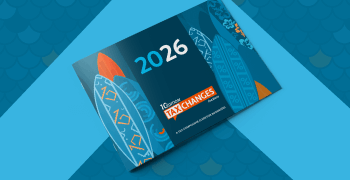
How automation can help alleviate hospitality staffing challenges
Business travelers racing to catch early flights and families gearing up for their summer getaways rely heavily on the seamless operations managed by hospitality staffing — from front desk teams who coordinate last-minute dinner reservations, to spotless housekeeping and administrative billing and bookings. These roles are much of what creates the memorable experiences that define each guest’s stay. Yet, with the hospitality industry grappling with economic pressures and a shifting labor market, hotel staff are overwhelmed, juggling multiple duties including complex compliance tasks.
This increased workload can lead to oversights in lodging tax processing, posing risks to compliance with intricate tax regulations. To address these challenges, exploring how automation and streamlined operations can free up valuable staff time becomes essential.
Ongoing labor shortage creates compliance issues for hotels
According to the American Hotel & Lodging Association, 67% of hotels report being understaffed, and the Bureau of Labor Statistics highlights that the hospitality sector’s job openings rate remains significantly above the national average. This labor shortage isn’t just about not having enough hands on deck; it deeply affects how hotels manage their lodging tax obligations.
With fewer employees available, the intricate work of understanding and implementing complex tax regulations often falls on staff members who might be overwhelmed and underprepared. This burden can lead to significant issues, impacting not just large transactions like luxury suite bookings but also the day-to-day sales such as a simple coffee at the bar. Each transaction carries its own tax implications, requiring meticulous tracking to ensure accurate tax collection.
Hotels must diligently track these transactions to ensure they accurately collect the correct taxes and maintain regulatory adherence. With the current labor shortages, the pressure on existing staff to manage these details correctly intensifies, increasing the risk of errors that can lead to audits and financial discrepancies.
Labor shortages stretch hospitality employees thin
When the staff at a hotel is spread too thin, managing multiple responsibilities at once, the meticulous work required for tax-related tasks often takes a hit. Employees, particularly those who aren’t trained in the complexities of tax law, are prone to making mistakes. Take managing exemption certificates, for instance — it’s a detailed task, and errors are all too common. These exempt certificates need careful handling to maintain compliance.
But here’s the thing — when the team at the front desk, who are stars at customer service, are also asked to tackle these tax responsibilities on top of their usual duties, the pressure mounts. This can greatly increase the risk of noncompliance and the potential for hefty penalties.
Tasks like tax reporting and remittance, which are essential for staying compliant, involve intricate processes like collecting, organizing, and submitting tax data to various authorities. And when you add in the fact that each jurisdiction might have different lodging tax rates, rules, and filing requirements, the complexity only deepens for properties spread across different locations or under various management structures, such as franchises or independent hotels.
Streamline and automate compliance to free up hospitality staffing
As hotel occupancy rates (i.e. revenue) go up while hospitality staffing struggles to keep up, many hotels are now turning to advanced property management systems (PMS) and automated tax solutions like Avalara. These technologies do more than just tidy up data management and financial reporting — they keep you compliant by staying current with the latest tax laws. By automating tax compliance, hotels not only free up valuable staff time to focus on guest services rather than backend paperwork but also minimize the risk of costly mistakes that can damage a hotel’s reputation.
Avalara for Hospitality provides a trusted route to automating tax compliance, easing operational loads, boosting accuracy, and smoothing out the guest experience. Leveraging technology to automate these essential processes ensures compliance and operational effectiveness in hotels, empowering staff to deliver the outstanding service that guests anticipate.
Dive into our 5-step guide to managing sales tax compliance for hospitality businesses, equipped with a handy checklist to make every step straightforward and manageable. As the hospitality industry continues to adapt, adopting these technologies can help aid hotels in keeping a competitive edge and operational resilience amid ongoing labor shortages.
With these tools and strategies, hotels can do more than just cope and their staff can concentrate on what’s truly important — crafting unforgettable guest experiences.

Avalara Tax Changes 2026 is here
The 10th edition of our annual report engagingly breaks down key policies related to sales tax, tariffs, and VAT.
Stay up to date
Sign up for our free newsletter and stay up to date with the latest tax news.














